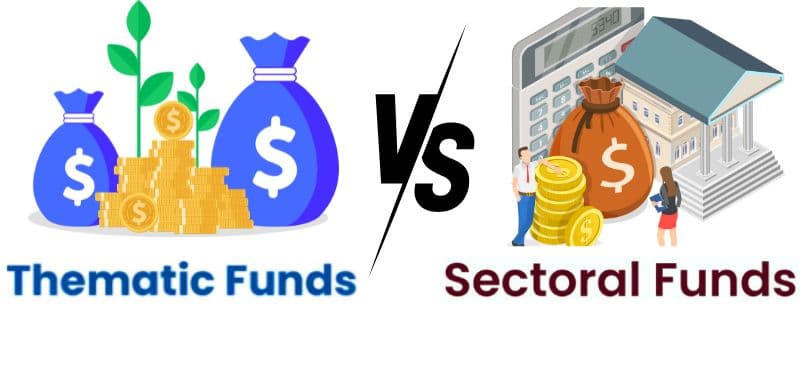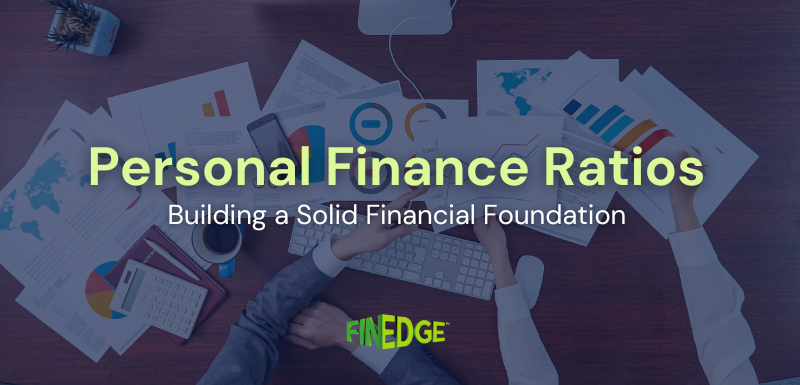Sectoral/Thematic Funds Have Seen Inflows of Rs. 55,000 Crores in the Last 6 Months: Should You Invest?

As of July 2024, sectoral and thematic mutual funds have seen more than Rs. 55,000 crore inflows in the last six months. The AMCs are on a NFO launching spree and mutual fund investors are lapping these funds. So, what are these sectoral/thematic funds, why are investors pouring so much money into these, and should you invest? Let us discuss.
What are Sectoral Funds Explained
A sectoral fund invests a minimum of 80% of its total assets in equity and equity-related instruments of a particular sector. For example, a banking sectoral fund invests 80% or more of its money in banking stocks. In India, sectoral funds are available on various sectoral indices, some of which include:
- Nifty Bank Index
- Nifty Auto Index
- Nifty Financial Services Index
- Nifty FMCG Index
- Nifty Healthcare Index
- Nifty IT Index
- Nifty Pharma Index
- Nifty Realty Index, etc.
As sectoral mutual funds invest a majority of their money in stocks of a specified sectoral index, they are concentrated in nature. They do well when the underlying sector is doing well, and investors benefit from it. However, when the underlying sector is undergoing a down cycle, they underperform, and investors have to be patient till the sector turns around.
It may happen that the sectoral fund is a top performer in a particular year, and the worst performer in the following year. With sectoral funds, it is mostly about the entry and exit timing to get the best returns. As sectoral funds are concentrated, they carry high risk. Hence, they are for investors with an aggressive risk profile.
Now that we understand what are sectoral funds, let us look at what are thematic funds.
What are Thematic Funds Explained
A thematic fund invests a minimum of 80% of its total assets in equity and equity-related instruments of a particular theme. For example, a manufacturing thematic fund invests 80% or more of its money in shares of manufacturing companies.
Investors should note that while a sectoral fund gives exposure to companies in one sector, a thematic fund gives exposure to companies in multiple sectors. For example, the Nifty PSE Index comprises companies belonging to various sectors like oil & gas, power, capital goods, financial services, metals & mining, etc. Even though the companies belong to various sectors, they are bound together by a common theme of being public sector enterprises (PSEs). So, in terms of diversification, a thematic fund lies between sectoral funds and broader market capitalisation funds. The risk carried also lies between the two.
Similar to sectoral funds, thematic funds invest most of their money in stocks of a specified theme. Hence, due to their concentrated nature, they carry high risk and are meant for investors with an aggressive risk profile.
Thematic Funds vs. Sectoral Funds: Key Differences
Some of the key differences between sectoral and thematic funds include the following.
|
Sectoral funds |
Thematic funds |
|
A sectoral fund can give you exposure to a single sector like IT, telecom, new age companies, etc. |
A thematic fund can give you exposure to multiple sectors. For example, the Nifty India Digital thematic fund can give you exposure to sectors like IT, telecom, new age companies, etc., all in a single fund. |
|
A sectoral fund is concentrated compared to a thematic fund and carries higher risk. |
A thematic fund is more diversified than a sectoral fund and carries relatively lower risk than a sectoral fund. |
|
The duration of a business cycle of a sectoral fund is smaller than a thematic fund. Hence, to maximise returns, an investor will have to remain invested for a shorter duration unless they decide to stay invested across multiple cycles. |
The duration of a business cycle of a thematic fund is bigger than a sectoral fund as it spans across multiple sectors. Hence, compared to a sectoral fund, an investor can stay invested in a thematic fund for a longer duration to maximise returns. |
Recent Trends: Rs. 55,000 Crores Inflows in Sectoral/Thematic Funds
In 2024, sectoral and thematic funds have seen huge inflows of more than Rs. 55,000 crores (as of July). In the last couple of years, the share prices of listed companies in certain sectors and themes have given stellar returns. Some of these include companies in sectors/themes like manufacturing, defence, PSU banks and other PSEs, e-commerce, electric vehicles, digital, infrastructure, automobiles, financial services, healthcare, etc.
These sectors/themes did well in the recent past and are expected to continue to do well in the near future. So, several fund houses have launched new fund offerings (NFOs) of some of these sectors/themes. Investors have also been very receptive to these sectoral/thematic NFOs as they give exposure to stocks that are currently the flavour of the market. As a result, AMCs have received huge inflows in the NFOs and existing sectoral/thematic funds with lump sum and SIP investments.
How to Decide If Sectoral/Thematic Funds Are Right for You?
You must be wondering whether you should be investing in thematic funds and/or sectoral funds. The answer depends on where you are in your investing journey. If you are a beginner, you must work with an investment expert to identify your financial goals and make a goal plan for them. You must build a diversified investment portfolio with large, mid, small, and flexi-cap funds that can help you achieve your financial goals.
Once you have built a diversified investment portfolio, you may allocate a small percentage (5 to 10%) of your portfolio to sectoral/thematic funds. As discussed earlier, sectoral/thematic funds are concentrated compared to broader market capitalisation funds. They carry relatively higher risks, and hence, investors should limit their exposure to these funds.
FAQs
Why Should Retail Investors Focus on Diversified Equity Funds Rather Than Sectoral/Thematic Funds?
To make good returns from sectoral funds, the entry and exit timing is important. If an investor gets in early when the sector has just started performing well, they can ride the uptrend and exit before the downcycle starts. This is easier said than done for retail investors. Hence, retail investors should focus their attention on diversified equity funds.
Which Are Some of the Thematic Indices on Which Thematic Funds Are Available for Investors?
In India, thematic funds are available on various thematic indices, some of which include:
- Nifty Commodities Index
- Nifty India Consumption Index
- Nifty India Defence
- Nifty India Digital
- Nifty India Manufacturing Index
- Nifty Infrastructure Index
- Nifty PSE Index
- Nifty Transportation & Logistics, etc.
Your Investing Experts
Relevant Articles
Understanding the Financial Planning Pyramid: Building Your Finances the Right Way
Most people juggle several financial goals at once, an emergency fund, retirement planning, a child’s education, or even short-term lifestyle goals like travel. Without a proper framework, it becomes difficult to decide what to tackle first. The Financial Planning Pyramid offers a simple and effective way to bring structure to your financial life. It ensures that essential protections are in place before you start saving and investing for long-term wealth.
Personal Finance Ratios You Should Understand Before You Start Investing
Successful investing begins long before you pick funds or set return expectations. It starts with understanding your financial foundation, how much you earn, how much you spend, and how much is left to invest consistently. These simple but powerful personal finance ratios offer a clear view of your financial health and help you make informed, goal-aligned decisions.
How to Categorise Financial Goals: Short, Medium, and Long-Term Goals Explained
Before we get into strategies and structures, it’s important to understand the value of categorising financial goals. Every individual has a unique set of aspirations, but not all goals carry the same urgency or impact. By breaking them down clearly, you can build a systematic, purpose-driven investment plan tailored to your life.
.png)


.jpg)